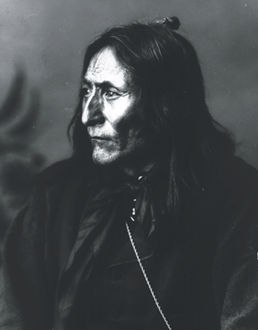Browse "People"
-
Article
Crawford Stanley Holling
Crawford Stanley Holling, “Buzz,” OC, FRSC, ecologist (born 6 Dec 1930 in Theresa, New York; died 16 August 2019 in Nanaimo, BC). One of the best-known Canadian forest entomologists, Holling gained international recognition for his work in the management of natural resources.
"https://development.thecanadianencyclopedia.ca/images/tce_placeholder.jpg?v=e9dca980c9bdb3aa11e832e7ea94f5d9" // resources/views/front/categories/view.blade.php
https://development.thecanadianencyclopedia.ca/images/tce_placeholder.jpg?v=e9dca980c9bdb3aa11e832e7ea94f5d9
-
Article
Crazy Canucks
In 1975, alpine skier Ken Read became the first North American to win a World Cup downhill race. For a period of about ten years, Read and three other young Canadians — Dave Irwin, Dave Murray, and Steve Podborski — challenged the European ski establishment and changed the course of ski racing history in Canada.
"https://development.thecanadianencyclopedia.ca/images/tce_placeholder.jpg?v=e9dca980c9bdb3aa11e832e7ea94f5d9" // resources/views/front/categories/view.blade.php
https://development.thecanadianencyclopedia.ca/images/tce_placeholder.jpg?v=e9dca980c9bdb3aa11e832e7ea94f5d9
-
Article
Cree
Cree are the most populous and widely distributed Indigenous peoples in Canada. Other words the Cree use to describe themselves include nehiyawak, nihithaw, nehinaw and ininiw. Cree First Nations occupy territory in the Subarctic region from Alberta to Quebec, as well as portions of the Plains region in Alberta and Saskatchewan. According to 2021 census data, 223,745 people identified as having Cree ancestry and 86,475 people speak Cree languages.
"https://d2ttikhf7xbzbs.cloudfront.net/media/media/a78f261e-39c7-450a-bd19-466a86a5742c.jpg" // resources/views/front/categories/view.blade.php
https://d2ttikhf7xbzbs.cloudfront.net/media/media/a78f261e-39c7-450a-bd19-466a86a5742c.jpg
-
Article
Cree Code Talkers
Cree code talkers were an elite unit tasked with developing a coded system based on the Cree language for disguising military intelligence. They provided an invaluable service to Allied communications during the Second World War. Although their contributions remained hidden until recently, in part because the code talkers had been sworn to secrecy, their service helped to protect Western Allies and to win the war. Indeed, the Allies’ enemies were never able to break the code.
"https://d2ttikhf7xbzbs.cloudfront.net/media/media/d211edaf-1e6a-40f4-880a-cde6d355bf44.jpg" // resources/views/front/categories/view.blade.php
https://d2ttikhf7xbzbs.cloudfront.net/media/media/d211edaf-1e6a-40f4-880a-cde6d355bf44.jpg
-
Article
Cree Language
The Cree language (also called Cree-Montagnais-Naskapi) is spoken in many parts of Canada, from the Rocky Mountains in the west to Labrador in the east. Cree is also spoken in northern Montana in the United States. Often written in syllabics (i.e., symbols representing a combination of consonant and vowel, or just a consonant or vowel), Cree is one of the most widely spoken Indigenous languages in Canada. In the 2021 census, 86,475 people reported speaking Cree.
"https://d2ttikhf7xbzbs.cloudfront.net/media/media/b6607b22-8c55-4f10-86dd-a72dfcb1b740.jpg" // resources/views/front/categories/view.blade.php
https://d2ttikhf7xbzbs.cloudfront.net/media/media/b6607b22-8c55-4f10-86dd-a72dfcb1b740.jpg
-
Article
Criddle Family
The Criddle family were naturalists known for detailed and long-term records of fauna and flora at Aweme (near Treesbank), Manitoba, starting with Percy's diaries kept since their arrival from England in 1882.
"https://development.thecanadianencyclopedia.ca/images/tce_placeholder.jpg?v=e9dca980c9bdb3aa11e832e7ea94f5d9" // resources/views/front/categories/view.blade.php
https://development.thecanadianencyclopedia.ca/images/tce_placeholder.jpg?v=e9dca980c9bdb3aa11e832e7ea94f5d9
-
Article
Croatian Canadians
Croatia is a country in southeastern Europe. It is bordered by Slovenia, Hungary, Serbia, Bosnia-Herzegovina, Montenegro and the Adriatic Sea. The first Croatians to set foot on the land known today as Canada may have been two sailors from Dalmatia. One, serving as crew on Jacques Cartier’s third voyage (1541-42) and another, a miner who accompanied Samuel De Champlain in his explorations (1604-06). The 2016 census reported 133, 970 people of Croatian origin in Canada (55, 595 single and 78, 370 multiple responses).
"https://development.thecanadianencyclopedia.ca/images/tce_placeholder.jpg?v=e9dca980c9bdb3aa11e832e7ea94f5d9" // resources/views/front/categories/view.blade.php
https://development.thecanadianencyclopedia.ca/images/tce_placeholder.jpg?v=e9dca980c9bdb3aa11e832e7ea94f5d9
-
Macleans
Cronenberg and Egoyan Compete at Cannes
This article was originally published in Maclean's Magazine on May 30, 2005
"https://development.thecanadianencyclopedia.ca/images/tce_placeholder.jpg?v=e9dca980c9bdb3aa11e832e7ea94f5d9" // resources/views/front/categories/view.blade.php
https://development.thecanadianencyclopedia.ca/images/tce_placeholder.jpg?v=e9dca980c9bdb3aa11e832e7ea94f5d9
-
Macleans
Cronenbergia in all its weirdness
He’s more like our Bowie than our Alice Munro. And now he gets his own art show.This article was originally published in Maclean's Magazine on October 18, 2013
"https://development.thecanadianencyclopedia.ca/images/tce_placeholder.jpg?v=e9dca980c9bdb3aa11e832e7ea94f5d9" // resources/views/front/categories/view.blade.php
https://development.thecanadianencyclopedia.ca/images/tce_placeholder.jpg?v=e9dca980c9bdb3aa11e832e7ea94f5d9
-
Article
Crowbar
Crowbar. Rock band, formed in the summer of 1969 as And Many Others to accompany Ronnie Hawkins.
"https://development.thecanadianencyclopedia.ca/images/tce_placeholder.jpg?v=e9dca980c9bdb3aa11e832e7ea94f5d9" // resources/views/front/categories/view.blade.php
https://development.thecanadianencyclopedia.ca/images/tce_placeholder.jpg?v=e9dca980c9bdb3aa11e832e7ea94f5d9
-
Article
Isapo-muxika (Crowfoot)
Isapo-muxika (Crowfoot), Siksika chief (born circa 1830 near Belly River, AB; died 25 April 1890, near Blackfoot Crossing, AB). Known more commonly as Crowfoot, Isapo-Muxika was a Siksika chief and diplomat who negotiated with the federal government on behalf of the Blackfoot Confederacy. He was a key link between Indigenous peoples on the western Plains and colonial forces by way of the North-West Mounted Police, and was key negotiator and supporter of Treaty 7.
"https://d2ttikhf7xbzbs.cloudfront.net/media/media/1b80328f-fa07-4341-b264-095c16c56c1f.jpg" // resources/views/front/categories/view.blade.php
https://d2ttikhf7xbzbs.cloudfront.net/media/media/1b80328f-fa07-4341-b264-095c16c56c1f.jpg
-
Editorial
Isapo-muxika (Crowfoot) and Treaty 7
The following article is an editorial written by The Canadian Encyclopedia staff. Editorials are not usually updated.
"https://d2ttikhf7xbzbs.cloudfront.net/media/media/f8dad739-53dc-468e-80b8-27bf80b69c29.jpg" // resources/views/front/categories/view.blade.php
https://d2ttikhf7xbzbs.cloudfront.net/media/media/f8dad739-53dc-468e-80b8-27bf80b69c29.jpg
-
Article
Crown
In a monarchy, the Crown is an abstract concept or symbol that represents the state and its government. In a constitutional monarchy such as Canada, the Crown is the source of non-partisan sovereign authority. It is part of the legislative, executive and judicial powers that govern the country. Under Canada’s system of responsible government, the Crown performs each of these functions on the binding advice, or through the actions of, members of Parliament, ministers or judges. As the embodiment of the Crown, the monarch — currently King Charles III — serves as head of state. The King and his vice-regal representatives — the governor general at the federal level and lieutenant-governors provincially — possess what are known as prerogative powers; they can be made without the approval of another branch of government, though they are rarely used. The King and his representatives also fulfill ceremonial functions as Head of State.
"https://d2ttikhf7xbzbs.cloudfront.net/Royal_Coat_of_Arms_of_the_United_Kingdom.svg.png" // resources/views/front/categories/view.blade.php
https://d2ttikhf7xbzbs.cloudfront.net/Royal_Coat_of_Arms_of_the_United_Kingdom.svg.png
-
Article
Crown Attorney
Crown attorneys are agents of either the ATTORNEY GENERAL for Canada or the attorneys general for the provinces and territories, who respectively are the chief legal officers for the federal, provincial and territorial governments.
"https://development.thecanadianencyclopedia.ca/images/tce_placeholder.jpg?v=e9dca980c9bdb3aa11e832e7ea94f5d9" // resources/views/front/categories/view.blade.php
https://development.thecanadianencyclopedia.ca/images/tce_placeholder.jpg?v=e9dca980c9bdb3aa11e832e7ea94f5d9
-
Article
Crystal Pite
Pite received her dance training from Maureen Eastick and Wendy Green of Pacific Dance Centre in Victoria, and at summer programs at the BANFF CENTRE and the School of the Toronto Dance Theatre.
"https://d2ttikhf7xbzbs.cloudfront.net/media/media/997d4322-6497-4056-b193-58981abd5d96.jpg" // resources/views/front/categories/view.blade.php
https://d2ttikhf7xbzbs.cloudfront.net/media/media/997d4322-6497-4056-b193-58981abd5d96.jpg
